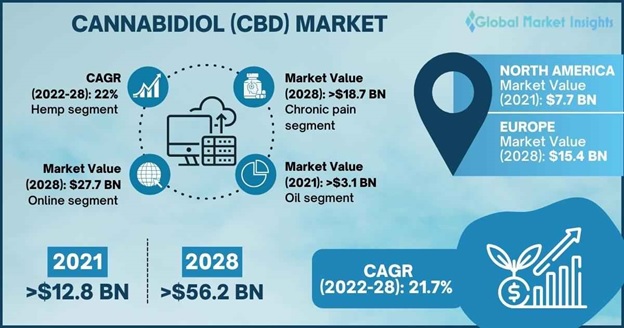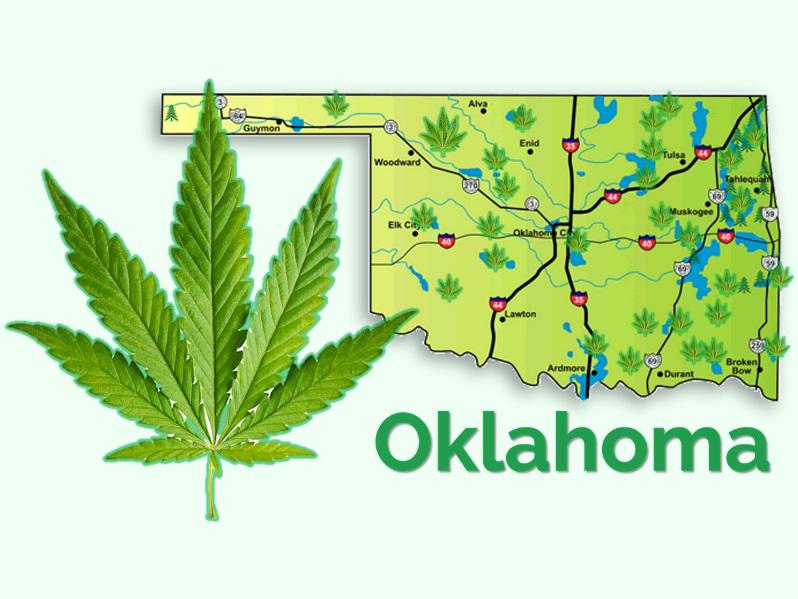How healthy will the CBD market be in 2023?

Technavio has announced its latest market research report titled CBD Oil Market by Product and Geography – Forecast and Analysis 2021-2025
How healthy will the CBD market be in 2023?
Predicting the future of a market is difficult enough at the best of times. Predicting the future of a market as new as CBD in an economy like the one we have is near impossible.
Not totally impossible though.
There are enough signals and enough data out there to be able to make some predictions with an acceptable degree of accuracy.
That has allowed us to make a number of predictions we are confident enough to put our name behind.
The market is still in flux and state legislatures are being a little slow off the mark in some places. Yet there is enough of a trend to be able to create a relatively clear picture of what the future holds for the CBD market in 2023.
This report is concerned with CBD products and medical use. Recreational use of weed and THC products are outside the scope of this report. We do refer to THC products within the report but only to add context for the wider market.
Here’s what we think we know:
Growth

Attractive Opportunities in Cannabidiol Market by Source and Geography – Forecast and Analysis 2021-2025
Our main prediction for the CBD market in 2023 is growth across the board.
CBD products are proving their worth in medicine, pain management, treating stress and anxiety and several other areas.
Once people realized that CBD was different from THC and they wouldn’t get high using a CBD product, acceptance skyrocketed.
Even though the pandemic is over, we are still enduring tough times. With health costs rising, CBD products offer an accessible, viable alternative.
That’s one of the many reasons why we predict growth over the coming year.
We also factor in those states slow off the mark to legalize weed and, CBD products in particular.
In all, 37 states have legalized cannabis for medical use. We expect at least some of the other 13 states to legalize medical use at some point in the future.
While we are concentrating on CBD and medical use, there is an inherent link between CBD and THC products when it comes to legislation. There are currently 21 states that have legalized recreational marijuana.
They are:
Alaska, Arizona, California, Colorado, Connecticut, Illinois, Maine, Maryland, Massachusetts, Michigan, Missouri, Montana, New Jersey, New Mexico, New York, Nevada, Oregon, Rhode Island, Vermont, Virginia and Washington.
Recent elections in Arkansas, South Dakota and North Dakota recently voted down legalization for recreational use. Similar elections in Maryland and Missouri approved legalization according to CNN. It is very unlikely that these states will be the last to vote on legalization, as 91% of Americans apparently support it.
Medical use of CBD products has much wider acceptance across all 50 states and across society as a whole. As more data becomes available, we expect that acceptance to increase.
This will all feed into that growth.

Thirdly, we also predict growth in new markets.
While still regarded as an outlier, the CBD industry is gradually gaining legitimacy.
There hasn’t been the rise in crime people predicted and CBD products have yet to prove itself a ‘gateway drug’ to harder substances. A common argument in those who didn’t want to legalize it.
That argument was mainly one of ignorance and of assuming that CBD products have the same impact as legalized weed even though they are completely different.
This is where clearer lines between CBD and THC will be beneficial. The more people recognize the differences between medical use of CBD products and THC products, the better. This rise in legitimacy and a potential increase in reliable science backing up medicinal claims will very likely lead to wider acceptance across areas of society traditionally against the use of CBD.
Survival of the fittest
We think there’s going to be a rationalization of the current established CBD market in 2023.
We predict that some companies are going to begin swallowing the competition to add economies of scale, acquire market share and talent.
We may even see some states consolidating at a much higher level. Forbes said much the same thing back in 2021 and we consider the same will happen in 2023.
“Huge companies have been hesitant to embrace CBD as its initially “Wild West” market goes through growing pains. But once the regulatory landscape clears and stabilizes, I
believe many corporate giants will look to diversify their product lines with CBD and add brand-new products that open avenues of growth.
“Companies like Procter & Gamble, Johnson & Johnson, Coca-Cola, Unilever and more may get into the game, and they’ll do it through acquisitions of existing CBD market leaders.”
Some who did exceptionally well will expand and consolidate their hold on the market. They may swallow up smaller operations to round out capabilities or provide another link in the production chain.
Processors may acquire growers, wholesalers may acquire product manufacturers and so on. You will likely see more mention of big brands like CVS and Walgreens associated with CBD products over the coming year.
We think it will be a considered approach though.
We have all seen how big tech used to go on buying sprees and spend over the odds for niche companies.
We think it will be more measured here.
Competitors, or likely acquisitions, will be identified and purchased and we’ll begin to see a more corporate approach to CBD product production and distribution.
While not always a good thing, the rise of the CBD corporation will probably continue in earnest throughout 2023.
The increased use of celebrities and influencers
We have seen a sharp rise in the use of celebrities and social media influencers in marketing over the past decade. We think this same approach will increasingly be used to promote more CBD products.
As the CBD market is gaining legitimacy, fewer celebrities will be reticent about becoming involved.
Now promoting crypto has become so risky, there’s a gap in the market for celebrities and influencers to promote something that will appeal to their target market.
Something that isn’t flooded already and is gaining traction across society.
We may not see the Kardashians using CBD oil on one of their shows, but we predict a slow increase in the number of celebrity-endorsed CBD products. The Rolling Stone did a piece back in 2021 extolling the virtues of celebrity endorsement. We consider the sentiments from that piece to be as relevant now and into 2023 as it was when it was first written.
Even though it refers to legalized weed, the same is also true of CBD.
CBD product banking reform
Banks have been almost as slow as state legislatures to embrace the new reality of CBD, but we think that will change in 2023. Whether it’s part of the Secure and Fair Enforcement (SAFE) Banking Act or something else entirely, this is the last link in the chain. While aimed at the other side of the cannabis market, the CBD element will also benefit from this legislation if it passes.
Any company involved in CBD knows that handling and legitimately banking cash is a problem.
In those states where recreational use is legal, it’s even more of a problem.
It leads to logistical problems in how and where to store the cash. It leads to administrative problems in how to manage taxes, payroll and business expenses.
It also feeds crime, which is the one thing the cannabis market as a whole cannot afford to do.
The industry is cash-rich and everyone knows it. People also know banking that cash can be problematic for smaller businesses.
That makes them a prime target for crime. Easy cash is a no-brainer for some elements of society and that’s something that must be tackled.
Hopefully, the Secure and Fair Enforcement (SAFE) Banking Act or whatever comes after can help with that.
Banks and financial institutions will be able to better service CBD companies and take care of all that cash.
It will add even more legitimacy to the industry and help reduce the risk vector provided by all that cash. It’s a win win if legislators recognize the opportunity.
Even if the SAFE Act doesn’t go far enough, the industry will have to evolve to minimize risk and better handle the administrative side of the business.
More female leadership
One surprising way the entire weed industry has been ahead of the curve is with female leadership. There are several women in charge of influential companies and in leadership roles across the industry.
This must be encouraged at all costs.
Not only are women a key market for CND products, they are also 51% of the population and are equally, if not more than, capable as men at managing businesses.
This is fantastic news for the industry as there are some trailblazers out there right now.
It’s also fantastic news for the country at large. Even big tech and ‘more modern’ enterprises have been slow off the mark to recognize the potential of women in leadership roles.
If the CBD industry leads and proves itself successful because of it, the rest of society could follow.
That can only be a good thing. According to NBC, Gen Z women are the fastest-growing market for weed in general. We already know they are a prime market for CBD products. The industry isn’t going to continue attracting that demographic unless they are fairly represented across the industry at all levels. From what we have seen, the embracing of social equity within the CBD and the legalized cannabis market took everyone by surprise. A pleasant surprise to be sure, but it’s unlike other areas of American society.
We for one hope that continues well into 2023!
Further diversity in CBD products
Right now, CBD products are aimed at medicinal purposes and are rapidly gaining acceptance in a range of medical settings. However, we have also noticed an increase in lifestyle use of CBD.
There is a noticeable increase in the use of CBD products to unwind, de-stress and relax as well as for medical uses.
Given how modern life is right now, people are increasingly looking for ways to lower stress and anxiety that won’t impact their health.
This attitude should be embraced. Traditional ways of relaxing typically include alcohol or drug use, both of which can have negative outcomes.
The ride of CBD as a relaxant offers major benefits over those and we think it’s something that will gain traction as understanding increases.
Online ordering and delivery
Online ordering and delivery saw a huge boom during the pandemic and after. We think this trend is going to continue well into 2023.
We are all getting used to ordering online and having either curbside pickup or delivery that it’s becoming a big part of how we consume.
It makes CBD feel like any other industry from Amazon to Uber Eats. This is a comforting feeling we think will encourage increased consumption and help wider acceptances in society.
The more CBD emulates widely accepted industries, the more like those industries it will be perceived to be.
The more accepted it is, the less it will be seen as an outlier and the more acceptance it should experience. The State of the Cannabis Industry report in 2020 showed stored that had ordering facilities sold 22% more product than those that didn’t.
That shows there is a demand for this facility and tangible benefits for stores to provide it.
While that report refers to cannabis more than CBD, it will be relevant to both.
Following in the footsteps of alcohol
In many respects CBD is already following in the footsteps of alcohol. It is treading carefully after prohibition to keep public opinion on side and to not do anything to make legislators change their mind.
It is also working hard to gain legitimacy and wider acceptance, just like alcohol after prohibition.
There is also the question of advertising.
For the longest time, you would never see adverts for liquor in many states. You would see beer ads everywhere, but strong liquor was conspicuous by its absence.
Only when drinks manufacturers got together and agreed a code of practice did you begin to see ads for liquor.
They all carried the ‘safe in moderation’ message, which was on the right side of the line for all concerned.
We think the CBD industry will try something similar. It works for liquor, so why wouldn’t it work?
A similar ‘safe in moderation’ message would resonate well with all areas of society. It’s a mantra that is used across the country, from food manufacture to medicine so it’s a message we are all familiar with.
We think the CBD industry could also benefit more from similar messaging.
This would allay fears held by many who are against legalization for medical use. Fears that everyone would overindulge and our hospitals would be full of people suffering from addiction or negative effects and jails full of criminals fueled by the use of new CBD products derived from cannabis.
If anything, aside from time and education, can allay such fears, it’s a coordinated advertising campaign that the entire industry can agree on.
We think 2023 may be the year the CBD industry uses the lessons of liquor and self-regulate so they can advertise more.
Increased awareness of health benefits
Our final prediction for the CBD industry for 2023 is a significant increase in the awareness of health benefits.
That includes medical use, treating PTSD, use for other conditions, pain management and the benefits of CBD versus addictive pharmaceuticals.
The public is becoming increasingly aware of the negative effects of some pharmaceuticals as well as the negative impacts of big pharma and the industry as a whole.
While CBD products don’t seek to supplant big pharma in any way, we predict people will continue exploring alternatives to traditional medication.
This will be drive both by cost and by accessibility. The United States pays more for prescription medication than any other country in the world. Those costs are increasing month on month and show no signs of slowing down.
CBD products are accessible to those without medical insurance or with lower tier insurance that doesn’t cover many traditional medications.
It is also accessible without having to consult a physician (in legal states), which lowers the cost and barrier to entry.
While there are fears of addiction with legalized weed, they are nothing compared to the opioid epidemic.
We think all these factors will influence younger users and will gradually spread to older users as more science appears and CBD becomes much more widely accepted as a treatment.
We have come a long way over the past few years but there is more yet to do.
The CBD market in 2023

Predictions are always tough. Industries, governments and the consumer public just love to throw curveballs and keep us on our toes.
However, we think the data and the industry’s evolution is providing clear indications for each of these predictions.
The CBD industry is an exciting place to be. It’s thriving, finding its feet and blazing its own trail. A bit like bit tech in the late 1990s and early 2000s, only with a little more planning and forethought!
There is a lot that’s out of our control but a lot that we can control. Balancing the business with these two competing factors is a challenge but a challenge most in the industry are more than up to!








